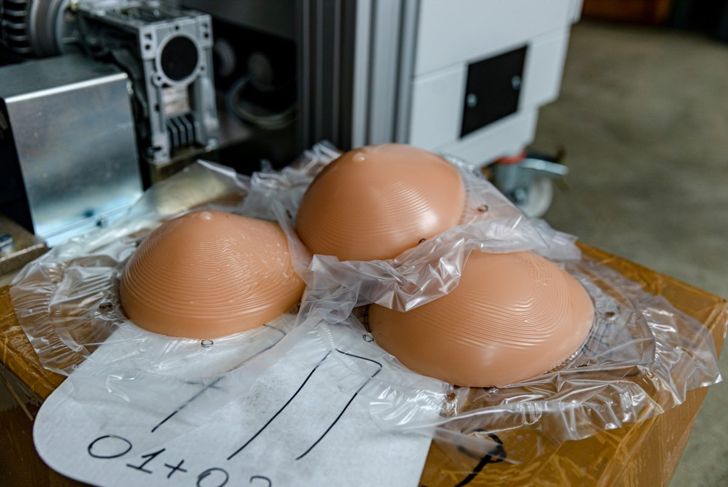Ductal carcinoma in situ (DCIS) — or intraductal carcinoma — is sometimes known as stage 0 breast cancer. It is non-invasive, only affecting the cells that line the milk ducts, though it can spread if undetected or untreated. Diagnosis of DCIS has been on the rise due to the widespread use of mammography. Previously, DCIS made up about 5% of new breast cancer diagnoses. Today, about 20% of all breast cancer diagnosed in the United States is DCIS.
Presentation
Ductal carcinoma in situ is a group of lesions varying in clinical presentation, genetics, biomarkers, and the potential to progress to invasive breast cancer, especially if left untreated. Most women with DCIS do not have any symptoms, but they may present with bloody discharge or a lump in the breast. DCIS is usually discovered on a mammogram as small calcifications of various shapes and sizes.
Non-invasive to Invasive
Doctors do not know how ductal carcinoma in situ progresses to invasive breast cancer. Recent modeling shows that, over a few months to 2.5 years, 36 to 100 percent of DCIS cases will progress to invasive breast cancer without treatment. That said, more research needs to be done on the subtypes, as there is wide variation between them.
Risk Factors for Progression
Researchers have identified a few risk factors for progression from DCIS to invasive breast cancer. These include increased exposure to estrogen, hormone replacement therapy, and the age of the woman’s first period, first live birth and menopause onset. Those with first-degree relatives who have been diagnosed with breast cancer are at higher risk as well.
Diagnosis
About 90 percent of ductal carcinoma in situ cases are detected on a regular mammogram screening. Small calcifications in branching patterns are suspicious for DCIS. If it is suspected, the next step is a diagnostic mammogram and a core needle biopsy to determine if the cancer is non-invasive or invasive. There is a chance that someone presenting with DCIS may already have invasive breast cancer. Even when a needle biopsy shows the former, the chances that the cancer is invasive are between 10 and 20 percent, but this often is not confirmed until after surgery. Large or fast-growing DCIS lesions are more likely to be invasive.
Determining Treatment
There are two primary surgical treatments for ductal carcinoma in situ. To determine which is appropriate, doctors consider the patient’s medical and family history and physical exam results, and the size and characteristics of the lesions. They may also recommend genetic counseling to determine any predisposition.
Breast-Conserving Surgery
One treatment for ductal carcinoma in situ is breast-conserving surgery or BCS. The surgeon removes the tumor and the tissue surrounding it. They may or may not remove lymph nodes if invasive cancer is suspected. Radiation therapy follows, to lower the chances of the cancer returning.
Radiation Therapy and Follow-up
After breast-conserving surgery, test results indicate whether any additional tissue removal is needed to treat DCIS before radiation therapy begins. The patient also has a mammogram a few weeks after surgery, before radiation. Follow-up and surveillance mammograms occur six months after radiation and every six months after that, along with lymph node exams for two years after surgery. After that, exams are done yearly.
Simple Mastectomy
Another surgical option for ductal carcinoma in situ is simple mastectomy or removal of the breast. If the DCIS is large, if it is in multiple areas, or if specimens collected after breast-conserving surgery have cancer cells near the margins, simple mastectomy may be necessary. Women who undergo this treatment do not need radiation therapy afterward.
Lymph Node Biopsy and Reconstruction
Many surgeons also perform a sentinel lymph node biopsy during a simple mastectomy for ductal carcinoma in situ. A sentinel node biopsy cannot be done after such a surgery, and it is an essential part of determining whether the cancer is invasive. After either surgery, women can undergo breast reconstruction, though those who have breast-sparing surgery have to wait until after radiation.
Other Treatment and Prognosis
Endocrine therapy is part of the recommended treatment for ductal carcinoma in situ. Research has shown that, with some variants of DCIS, endocrine therapy significantly reduces breast cancer reoccurrence. Some therapies have significant side effects, including stroke, endometrial cancer, and pulmonary embolism. Patients must ensure they discuss the risks and benefits with their doctors. If caught early, the prognosis for DCIS is excellent. With successful treatment, women can have a normal life expectancy. If DCIS is not caught early or is aggressive, it can transform into invasive breast cancer, which has a much higher mortality rate.

 Home
Home Health
Health Diet & Nutrition
Diet & Nutrition Living Well
Living Well More
More




















